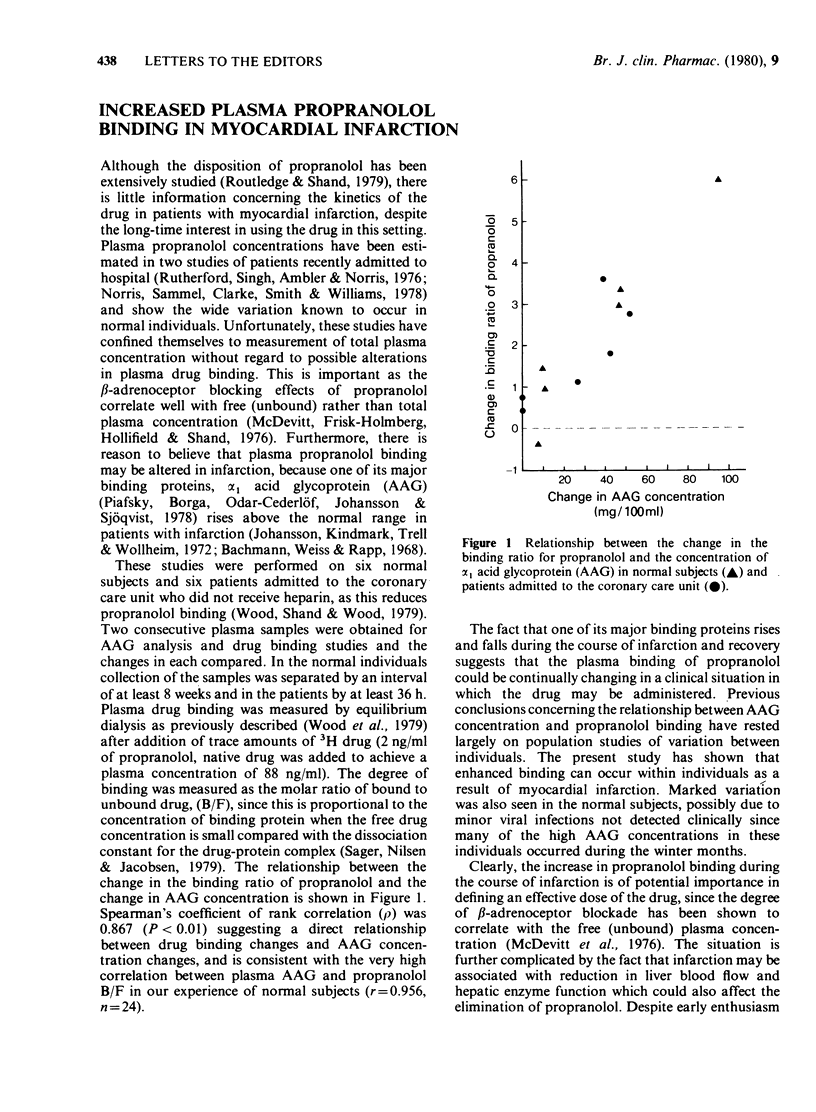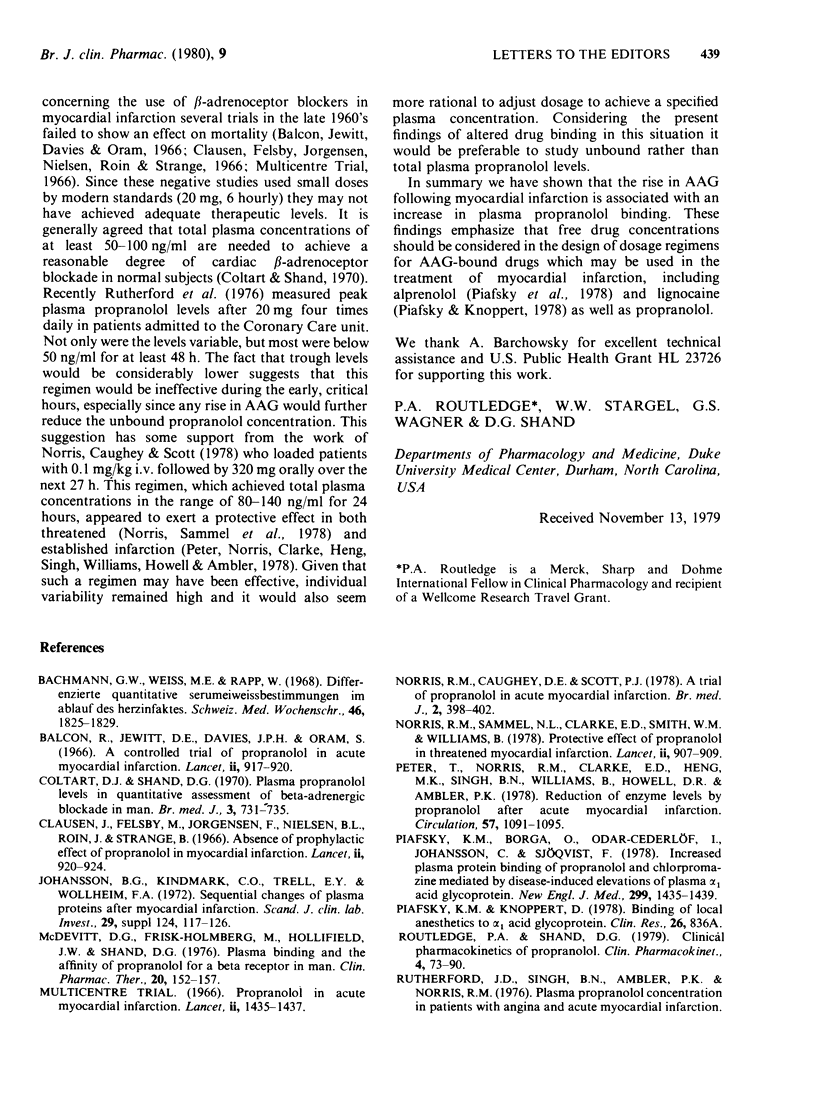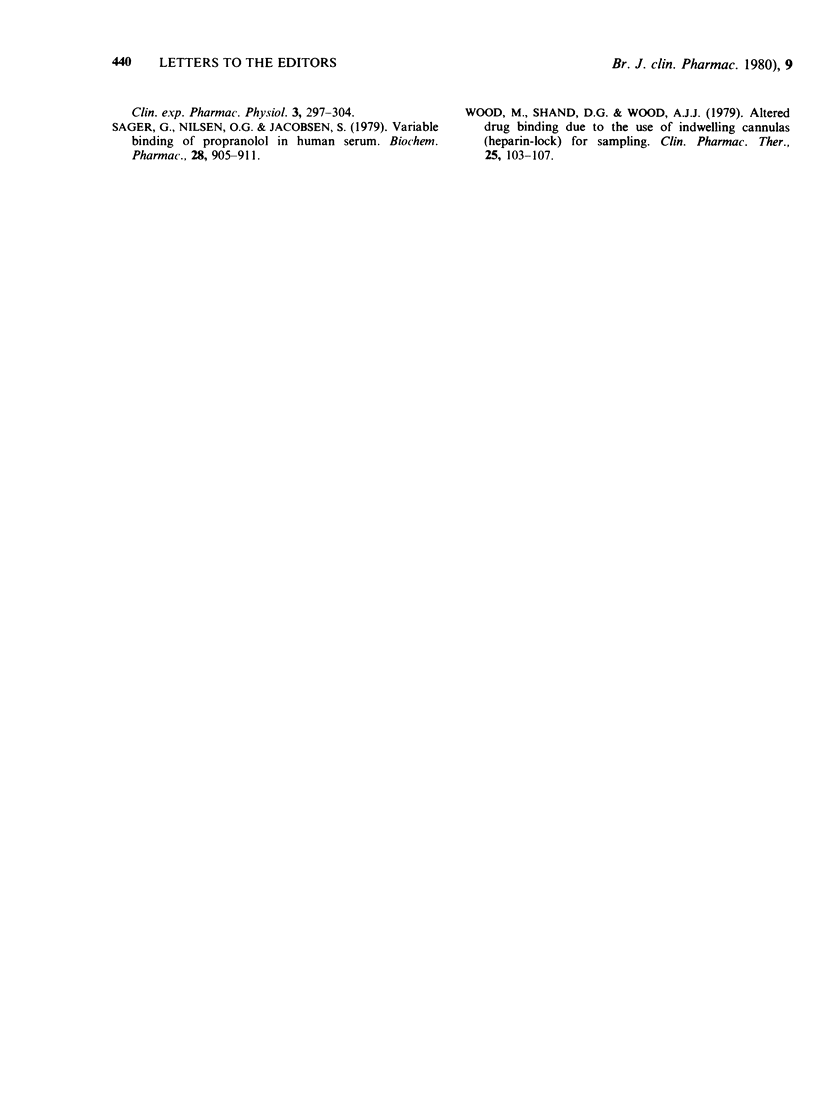Full text
PDF


Selected References
These references are in PubMed. This may not be the complete list of references from this article.
- Bachmann G. W., Weiss M. E., Rapp W. Differenzierte quantitative Serumeiweissbestimmungen im Ablauf des Herzinfaktes. Schweiz Med Wochenschr. 1968 Nov 16;98(46):1825–1829. [PubMed] [Google Scholar]
- Balcon R., Jewitt D. E., Davies J. P., Oram S. A controlled trial of propranolol in acute myocardial infarction. Lancet. 1966 Oct 29;2(7470):918–920. [PubMed] [Google Scholar]
- Clausen J., Felsby M., Jorgensen F. S., Nielsen B. L., Roin J., Strange B. Absence of prophylactic effect of propranolol in myocardial infarction. Lancet. 1966 Oct 29;2(7470):920–924. doi: 10.1016/s0140-6736(66)90533-2. [DOI] [PubMed] [Google Scholar]
- Coltart D. J., Shand D. G. Plasma propranolol levels in the quaniitative assessment of beta-adrenergic blockade in man. Br Med J. 1970 Sep 26;3(5725):731–734. doi: 10.1136/bmj.3.5725.731. [DOI] [PMC free article] [PubMed] [Google Scholar]
- Johansson B. G., Kindmark C. O., Trell E. Y., Wollheim F. A. Sequential changes of plasma proteins after myocardial infarction. Scand J Clin Lab Invest Suppl. 1972;124:117–126. doi: 10.3109/00365517209102759. [DOI] [PubMed] [Google Scholar]
- McDevitt D. G., Frisk-Holmberg M., Hollifield J. W., Shand D. G. Plasma binding and the affinity of propranolol for a beta receptor in man. Clin Pharmacol Ther. 1976 Aug;20(2):152–157. doi: 10.1002/cpt1976202152. [DOI] [PubMed] [Google Scholar]
- Norris R. M., Caughey D. E., Scott P. J. Trial of propranolol in acute myocardial infarction. Br Med J. 1968 May 18;2(5602):398–400. doi: 10.1136/bmj.2.5602.398. [DOI] [PMC free article] [PubMed] [Google Scholar]
- Norris R. M., Clarke E. D., Sammel N. L., Smith W. M., Williams B. Protective effect of propranolol in threatened myocardial infarction. Lancet. 1978 Oct 28;2(8096):907–909. doi: 10.1016/s0140-6736(78)91628-8. [DOI] [PubMed] [Google Scholar]
- Peter T., Norris R. M., Clarke E. D., Heng M. K., Singh B. N., Williams B., Howell D. R., Ambler P. K. Reduction of enzyme levels by propranolol after acute myocardial infarction. Circulation. 1978 Jun;57(6):1091–1095. doi: 10.1161/01.cir.57.6.1091. [DOI] [PubMed] [Google Scholar]
- Piafsky K. M., Borgá O., Odar-Cederlöf I., Johansson C., Sjöqvist F. Increased plasma protein binding of propranolol and chlorpromazine mediated by disease-induced elevations of plasma alpha1 acid glycoprotein. N Engl J Med. 1978 Dec 28;299(26):1435–1439. doi: 10.1056/NEJM197812282992604. [DOI] [PubMed] [Google Scholar]
- Routledge P. A., Shand D. G. Clinical pharmacokinetics of propranolol. Clin Pharmacokinet. 1979 Mar-Apr;4(2):73–90. doi: 10.2165/00003088-197904020-00001. [DOI] [PubMed] [Google Scholar]
- Sager G., Nilsen O. G., Jacobsen S. Variable binding of propranolol in human serum. Biochem Pharmacol. 1979 Mar 15;28(6):905–911. doi: 10.1016/0006-2952(79)90374-5. [DOI] [PubMed] [Google Scholar]
- Wood M., Shand D. G., Wood A. J. Altered drug binding due to the use of indwelling heparinized cannulas (heparin lock) for sampling. Clin Pharmacol Ther. 1979 Jan;25(1):103–107. doi: 10.1002/cpt1979251103. [DOI] [PubMed] [Google Scholar]


